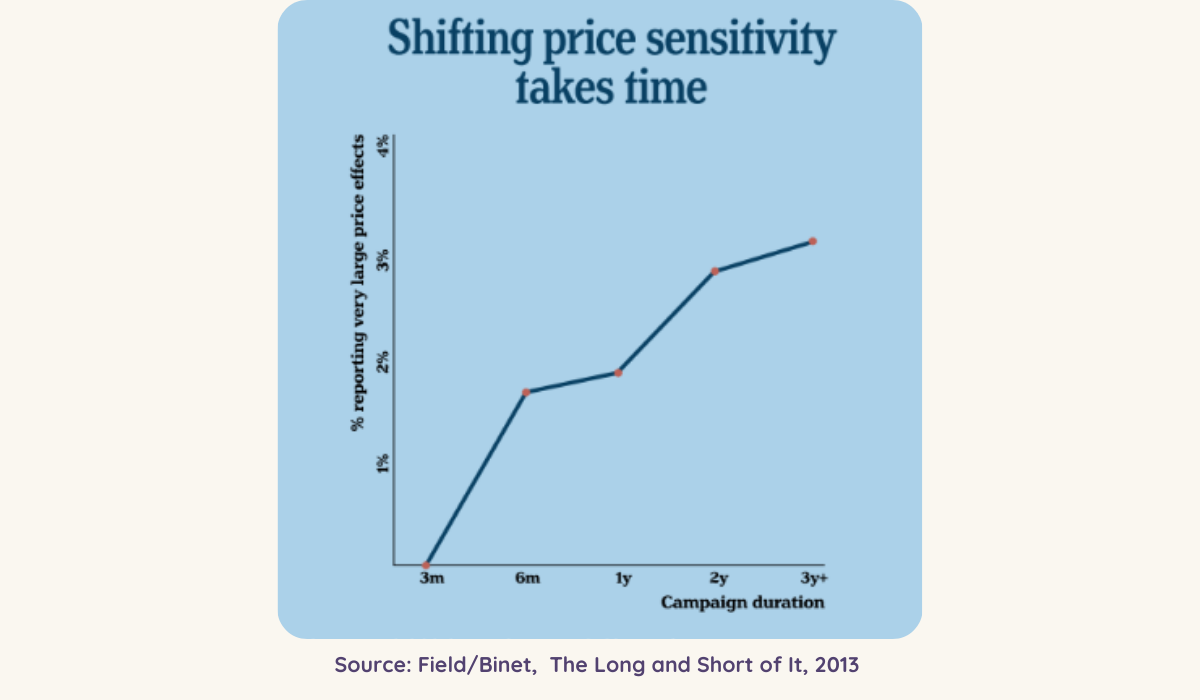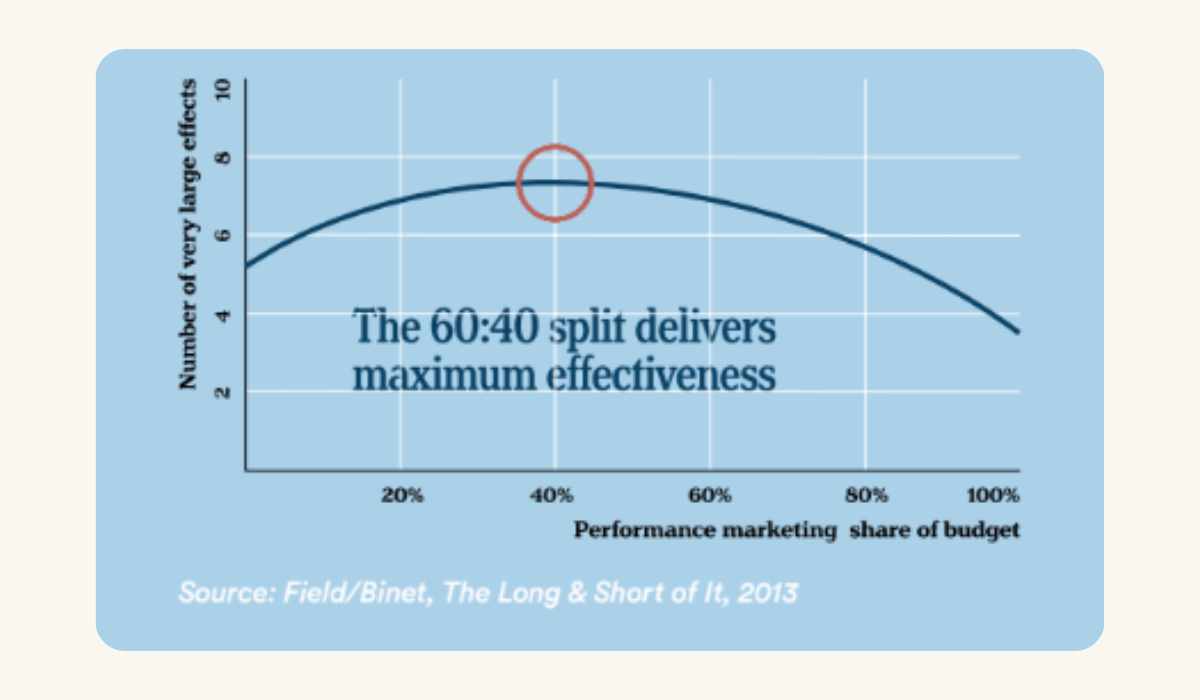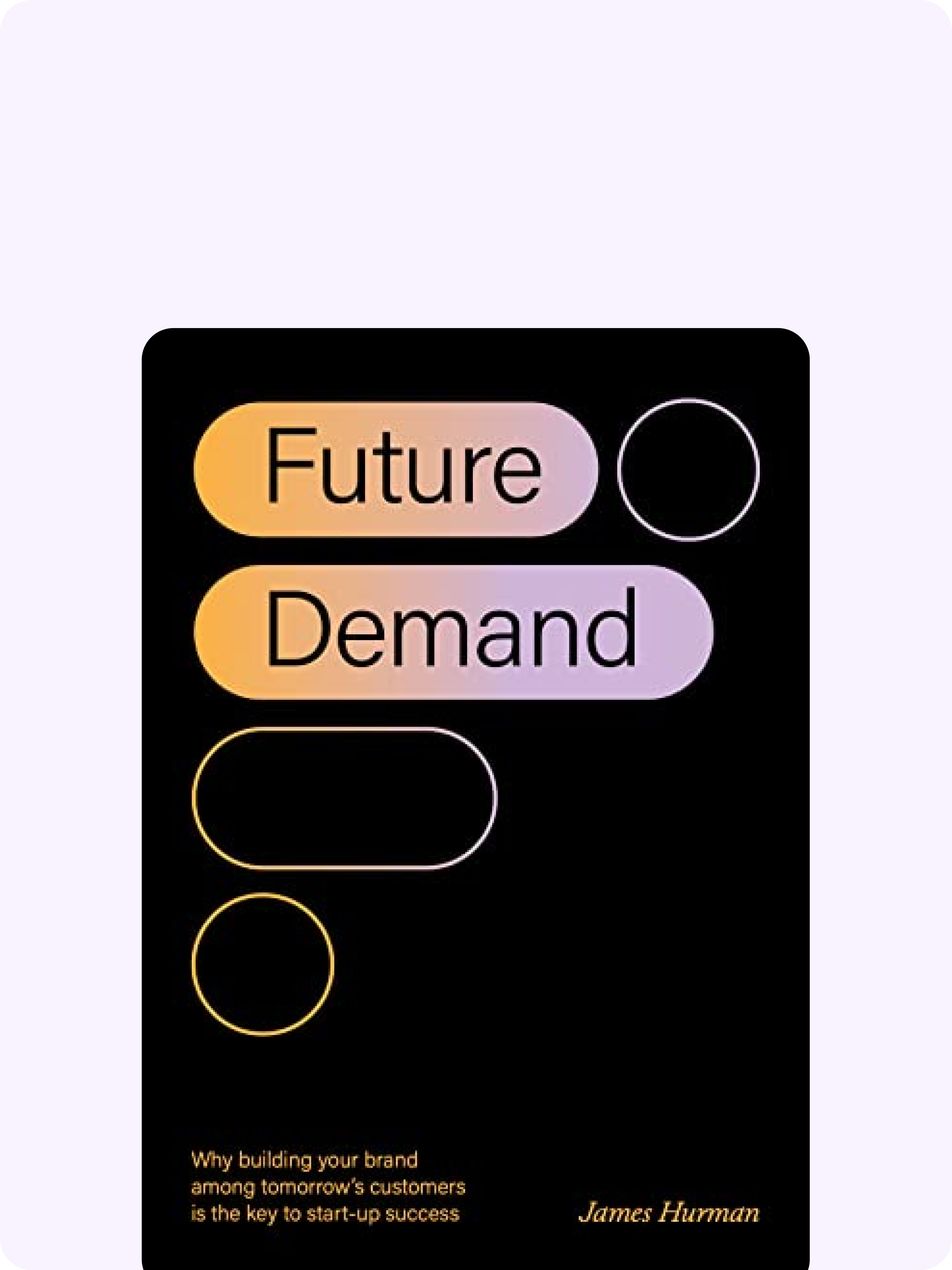Brand vs. performance marketing: How to get the balance right

It’s the age-old, million-dollar-question asked by many a marketer: “How much do I spend on brand vs. performance marketing?” 😅
The answer to this varies depending on your business industry, maturity and the competitive landscape, among other factors. Luckily, there is lots of research on this exact subject by effectiveness experts like James Hurman, Les Binet and Peter Fields for us to lean on to get closer to the exact answer.
If you want to succeed in reaching and converting your audience over the short and long-term, you need to find the right balance between brand and performance marketing and understand when and how to deploy each strategy effectively.
Let’s dive into how you can do just that 👇
Sign up to Shorts
For fortnightly brand insights, stories and goodness that'll help you win (we promise).
What is performance marketing?
Performance marketing is a digital marketing strategy that focuses on driving specific, measurable actions or results — like clicks, leads, or sales activation. Performance marketing often has a strong emphasis on immediate return on investment (ROI), and performance marketers are always looking to maximize leads and conversions while minimizing costs.
Performance marketing campaigns are implemented within a short timeline (six months or fewer) and their goal is to reach audiences and drive sales from those who are already in the market for your product or service.
Tracksuit Co-Founder and Global Marketing Effectiveness Expert James Hurman explains that when implementing performance marketing: “We want to use advertising to capture as big a share as possible of the existing demand in the market — that is, the people who are out there ready to buy now.”
The types of performance marketing
Some of the main types of performance marketing include:
- Pay-per-click (PPC) advertising: You pay a fee each time someone clicks on your ad. PPC advertising can be run on search engines, social media platforms, and other websites. It's an effective way to drive targeted traffic to a specific landing page, but it's important to manage your cost-per-click to ensure a positive return on investment.
- Affiliate marketing:This involves teaming up with affiliates who promote products or services on their own websites, blogs, or social media pages. Your affiliates get paid whenever someone converts using their specific link or code.
- Social media advertising:If your brand has a presence on social platforms like Facebook, Instagram, X (formerly Twitter), or LinkedIn, you can use social media advertising to promote your products, drive traffic, and generate leads and sales. Social media is one of the most common performance marketing channels for businesses.
- Email marketing: Email is another popular channel for performance marketing. This can include teaming up with an individual or publication with an existing email list, and plugging your products or services into their newsletter.
The challenges with performance marketing
Performance marketing is definitely effective in driving short-term results and sales activations, but diving into this strategy too heavily also comes with its challenges for businesses.
1. Rising cost of acquisition (CAC)
The cost of acquiring new customers through performance marketing is on the rise. Factors like increased competition, savvier customers, and changing algorithms can all drive up your advertising spend. These days, you need to be super creative to capture the attention of shoppers and get them to take a specific action.
2. Evolving consumer behavior and privacy concerns
Consumers have become wary about sharing their data, and with increased awareness around privacy, there are stricter regulations around the kinds of data that advertisers can collect and how they can use that info.
3. There's a limit on the existing demand you can harvest
Performance marketing enables you to tap into existing demand, which means people who are currently looking to buy your product or service. However, performance marketing isn’t very effective in capturing future demand — as in, building an emotional connection with potential customers who will buy from your category in the future.
This is an issue because future demand represents a much larger and untapped share of the market.
"Our research and the research of others suggests that existing demand is a far smaller group than future demand. That, at any point in time, only about 5 to 15 percent of a category’s buyers are in the market and ready to buy,” James says.
“The other 85 to 95 percent are future demand. They will definitely purchase at some point — maybe next week, next month or next year. But not right now.”
When you’re only focused on performance marketing, you’re missing out on the bigger chunk of potential customers.
Capturing future demand calls for a longer-term marketing strategy, which is where brand marketing comes in.
What is brand marketing?
Brand marketing focuses on building and promoting a brand's key messaging, like its identity, reputation, and values. Its main objective is to foster strong and enduring emotional connections with the brand’s target audience. Unlike performance marketing, which emphasizes immediate results, brand marketing is all about playing the long game and creating brand equity over the course of several months or even years.
Types of brand marketing
A brand marketing campaign can come in different forms and be implemented across various channels. Consider the following.
- OOH advertising: Running an out-of-home campaign on billboards or posters to lift brand awareness is a form of brand marketing, as the goal is not to get people to buy something immediately but to increase mental availability for when it does become time to purchase.
- TVCs: While it’s true there are many TV advertisements that exist purely to promote a sale, it’s more common for longer-form video content to use storytelling to build an emotional connection with viewers. The pay off for brands won’t be immediate, but it will help strengthen their relationship with potential customers.
- Radio advertising: Radio advertising is similar to TVCs and OOH in that it reaches a mass audience. This form of brand marketing uses storytelling through spoken words to lift brand awareness and consideration.
- Influencer marketing, brand ambassadors and growing a community: You can also partner with individuals that align with your values to promote your brand. Influencers can help amplify brand messages and reach new audiences, while growing a community around your brand creates advocates for your business that are engaged and interested in what you’re doing and will spread the word to others.
- Event marketing: This involves showcasing or sponsoring events to showcase your brand's products or services and connect with customers and industry professionals.
- Public relations (PR): PR is all about crafting a public image of your brand and growing brand awareness through media coverage, press releases, interviews, and crisis management. It helps shape public perception of the brand.
- Social media marketing: Just like with performance marketing, you can also leverage social media platforms to drive your brand efforts. But rather than product or CTA-driven ads, your brand social media initiatives and marketing efforts would be more along the lines of storytelling, engaging content, and building meaningful relationships with your audience.
Why it’s important to develop your brand 🚀
Brand building takes time and measuring the results of brand campaigns isn’t as clear cut as performance marketing. But when done right, brand marketing can have a profound impact on your business’ reputation, customer relationships, and bottom line. Here’s why.
1. It builds trust and an emotional connection with target consumers
People see strong and enduring brands as more reliable, consistent, and trustworthy. And since consumers are more likely to buy from companies they trust, having a solid brand can give you an edge over the competition.
2. It helps with loyalty and recall
A strong brand is also a memorable one. The right brand strategy creates a memorable and distinct identity in consumers' minds. This makes it easier for customers to recall your brand when they're ready to make a purchase and fosters long-term loyalty.
3. It gives you the ability to charge more
One of the most powerful, but most under-rated effects of strong brand building is the ability to charge more,” James says. Kantar Research shows that strong brands are able to charge a premium for their products and services which means they enjoy higher profit margins and increased revenue compared to competitors with weaker brand recognition.

Performance marketing vs. brand building
So, back to the oh-so-sticky question: should you focus on performance marketing or brand building? What’s the right split between these two approaches? We’ve got you!
How much to spend on performance marketing vs. brand marketing 💰
Your budget allocation for brand and performance will vary, based on factors like how much budget you have, the maturity of your business, and the industry. That said, marketing effective experts Les Binet and Peter Fields recommend the following split:
First year of business: 65% on performance marketing, 35% on brand (to capture all of the existing demand!) Early growth stage: 43% on performance marketing, 57% on brand.Mature brand: 38% on performance marketing, 62% on brand.Leader brand: 28% on performance marketing, 72% on brand.In other words: on average, a great place to start for businesses is spending around 40% of your budget on performance marketing and the rest (60%) on brand.

Les and Peter have looked at thousands of case studies and found that businesses who allocate their budget in this way are more likely to achieve a balanced marketing approach that delivers both short-term results and long-term brand growth.
How to work out your ideal split
Of course, marketing is part art and part science, so these numbers can definitely flex.
How do you find the right balance for your brand? Start by defining your objectives in the short, medium, and long-term. It also helps to analyze the competitive landscape and understand what similar brands are doing. Be sure to factor in your budget and how much you’re willing and able to spend on your marketing and advertising campaigns.
To make these steps easier, use Tracksuit’s Marketing Budget Calculator, which uses Binet and Field’s 60/40 methodology to help you figure out how to best allocate your marketing resource. Simply enter info about your market (category, sales channels, price) and the tool will generate your best budget split. Too easy 🙌
Always be tracking
Markets never stay static, which is why it's important to track and measure your efforts continuously. Your strategy will likely change over time, so stay agile and be prepared to adjust your marketing mix accordingly.
So what’s James’ advice?
"Day trade” your performance marketing, and “Warren Buffet” your brand building strategy.
This means actively and frequently adjusting your performance marketing tactics, much like a day trader manages stocks for short-term gains.
When it comes to brand building, in Warren Buffet we trust. You need to take a long-term, patient, and value-oriented mindset similar to Warren Buffett's investment philosophy. Focus on steadily growing and nurturing your brand over time, so you can yield massive returns in the future.
How to get buy-in for both types of investment 💸
Brand and performance take completely different approaches to marketing, so your strategy for getting buy-in from business leaders like your CFO will vary depending on what you’re looking to implement. Here are a few tips on how to get buy-in for both types of marketing investments.
1. Link brand to financial performance to strengthen your relationship with your CFO and stakeholders
Speak the language of your CFO and demonstrate how brand investments can lead to improvements in the KPIs they care about — such as increased revenue, customer lifetime value, and market share. Consider preparing case studies to present with your financial decision makers, and show how brand-building aligns with the company’s financial objectives.
For example, you could talk about how having a stronger brand will enable you to charge a premium for your products and services and maximize the company’s profit margins.
2. Link performance strategy to your brand
Use a holistic approach and find ways to connect your performance and brand efforts. For instance, you can demonstrate how having a strong brand can actually lead to a higher performance marketing ROI. After all, if people are already familiar with your brand, they’re much more likely to click on your ads and convert. Alternatively, you can also demonstrate how performance marketing can reinforce and amplify the brand message, helping to achieve both immediate results and long-term brand growth.
3. Back up your approach with methodologies and case studies
Provide data-driven evidence and industry-specific case studies to illustrate the effectiveness of your chosen marketing strategies. If you’re looking to get buy-in for performance marketing, you can present previous campaigns and discuss your results, learnings, and achievements.
Measure success with brand tracking to see the impact of your investments 📏
Use brand tracking tools and metrics to assess changes in brand perception, brand awareness, and sentiment over time. Make it a point to demonstrate the correlation between brand investment and positive outcomes like increased customer trust and higher customer lifetime value.
Using a tool like Tracksuit helps you track brand performance and perception overtime. We survey thousands of people each week from panels of millions around the world to give you access to actionable consumer insights via an intuitive, always-on dashboard.
Tracksuit enables you to keep an eye on your market and monitor brand health continuously and make the ambiguous landscape that is brand marketing more measurable. That way, you can make smarter decisions and ultimately reach your short and long-term business goals.
Happy brand building!








